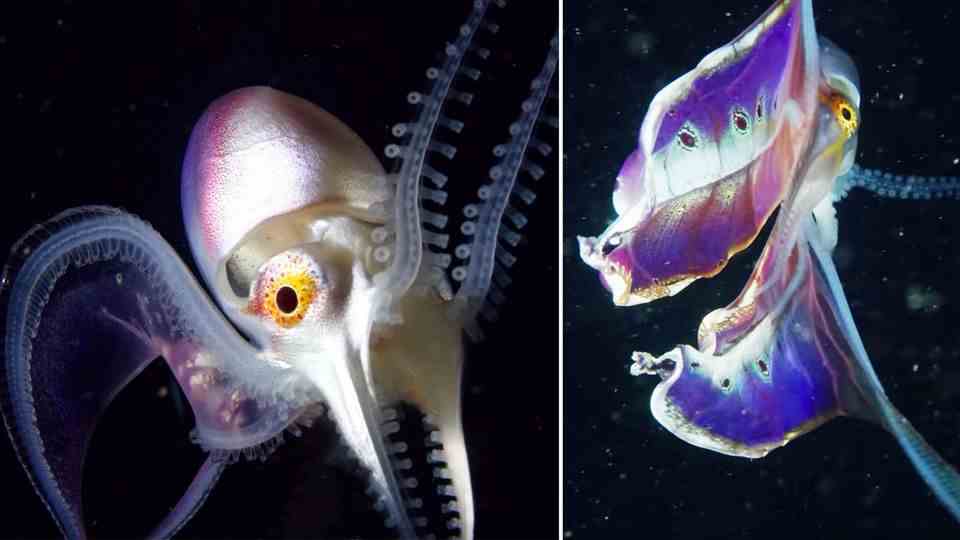500 million years old
Prehistoric creatures without anus: researchers find an explanation for the strange animal species
The sea creature Saccorhytus in one illustration.
© Jian Han
The sea creature Saccorhytus puzzled science. It was initially thought to be the earliest human ancestor, but new evidence shows the 500-million-year-old animal to be classified quite differently.
In 2017, the “Saccorhytus coronarius” was discovered: a sea creature just 1.5 millimeters in size that – as scientists put it – looks “like an angry minion”. Its age is dated at around 535 million years, so for a time the Saccorhytus was considered to be possibly the earliest ancestor of humans.
The researchers classified the animal as a newcomer, a group that also includes vertebrates. But new findings show that this was probably a misjudgment.
A new study published by a team of researchers from the US and China now classifies the Saccorhytus as a member of the molting animals. The scientists come to this conclusion after examining other fossils.
This would mean that the creature had nothing to do with the early human lineage, but was an ancestor of spiders and insects.
Sea creature’s body shape caused confusion
‘Fossils can be difficult to interpret and Saccorhytus is no exception,’ explained British researcher Emily Carlisle. The body shape of the Saccorhytus coronarius caused amazement: it had a mouth but no anus.
Molting animals usually possess an anus. It is now assumed that the animal had “an opening for everything”: that is, that food could be taken in through its mouth and superfluous substances could be excreted.

Even more decisive for the original classification as new mouths, however, was the discovery of openings around the mouth, which the researchers regarded as early forms of gills. However, this had to be revised.
With the help of synchrotron radiation (electromagnetic radiation that extends into the X-ray range), the researchers were able to create detailed images of the saccorhytus. “Some of the fossils were so perfectly preserved that they almost looked alive,” said Yunhuan Liu, one of the paleontologists involved.
The pictures showed that these were not openings, but rather broken off spikes.
The researchers assume that the animal lived on the sea floor because it had no limbs for locomotion. “We think it just sat there – in a very strange environment with some animals that looked like creatures that we know today, but also many that looked completely different,” says Emily Carlisle.
Sources: BBC / “Nature” / EurokAlert

